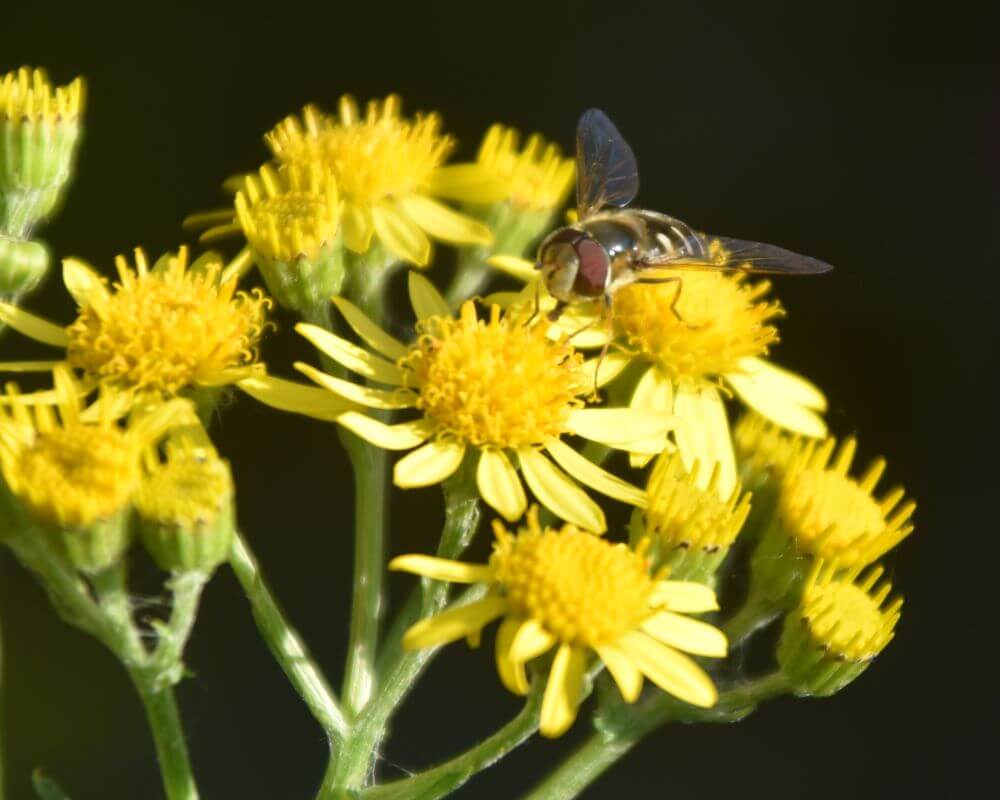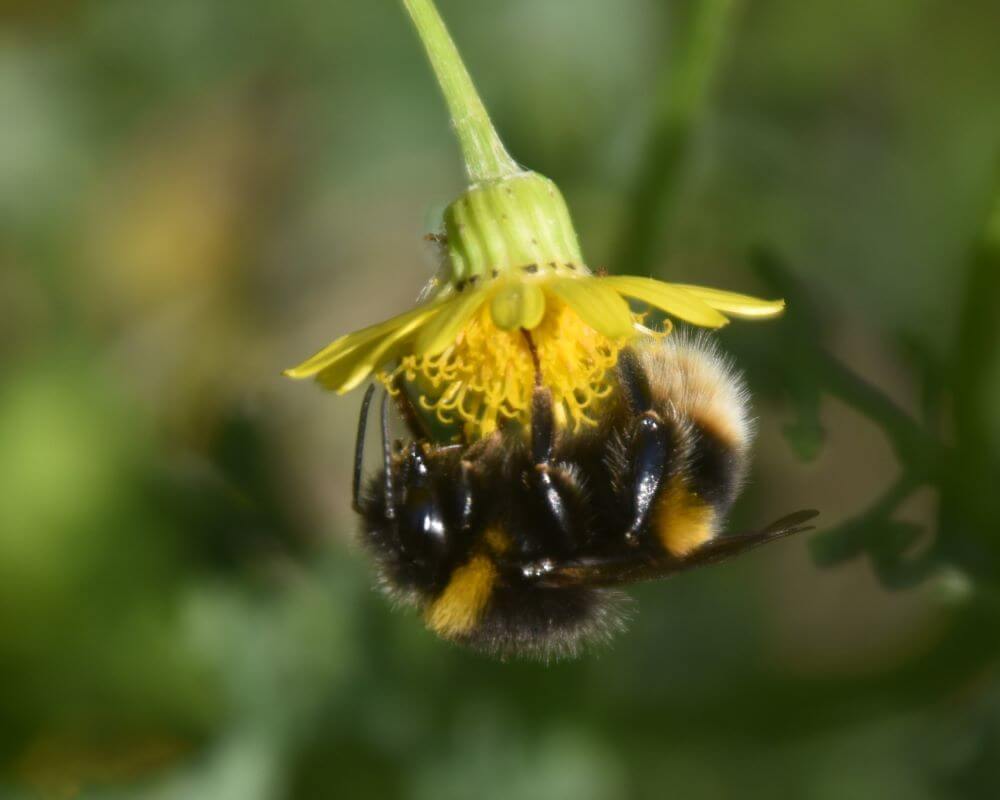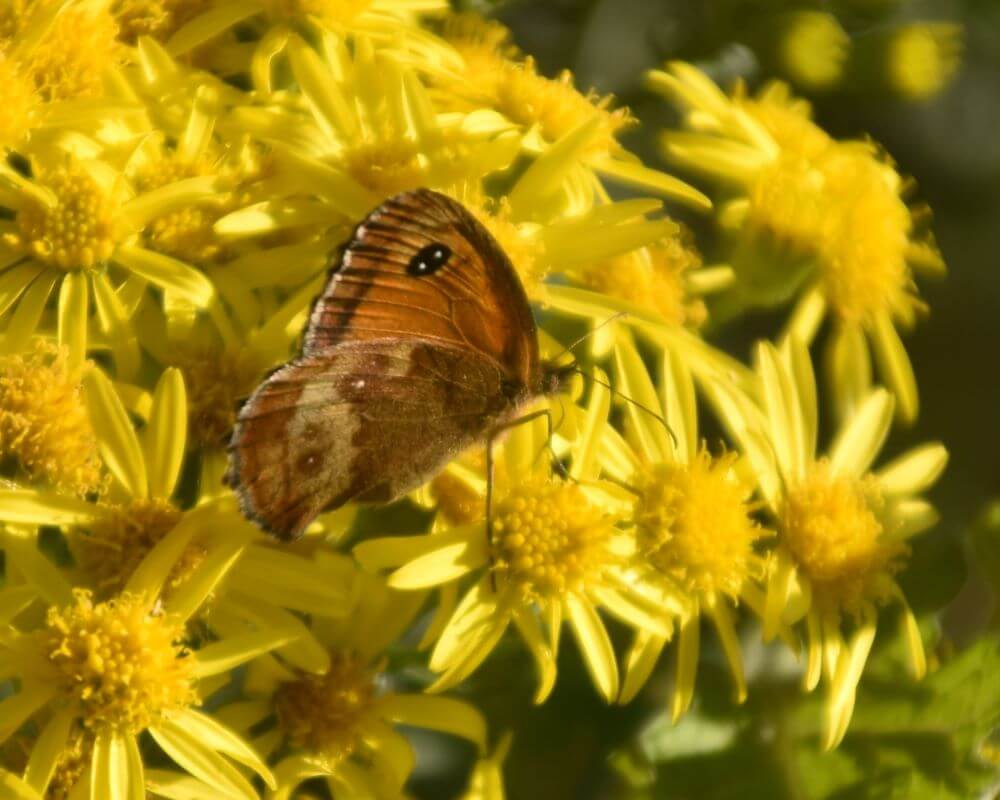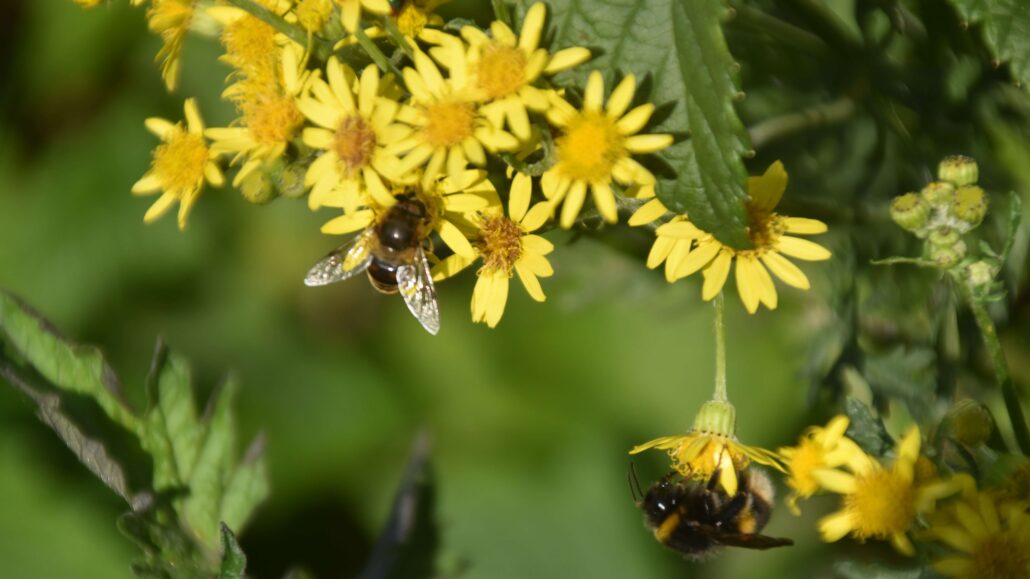Gardening
What’s Wrong with Ragwort?
‘That’s a weed,’ he said. ‘Why do you have a weed in your garden?’
‘It’s a wildflower,’ I said. ‘A native wildflower.’
‘Well, yes. But. There is something with that one. It’s bad. Poisonous. Bad for something. They were taking it away. There really is something with it. I think it’s poisoning something.’
I won’t tell you with whom I had this conversation (yes, it was James) but I will take this opportunity to do what little I can to counter the bad rep ragwort has.
Yes, ragwort is poisonous to mammals
Just like buttercups, for example.
Cattle and horses will normally not eat them. Only when there is really nothing else for them to find might they be tempted, so the suggestion that the world needs to be cleared from ragwort to save horses is not very much true. Just don’t put your ponies in a field with nothing but ragwort.
It is far more dangerous when mixed up with hay, for it works stronger and is less easily recognised by animals if it’s dried and cut up with grasses. Therefore, hay selling farmers should take caution when they have ragwort growing in their fields. And they should get rid of it.
But that doesn’t mean everybody has to. Then there’d be none left.
And yes, it is mentioned in the Weeds Act 1959
But this does by no means mean it is illegal.
To use the act’s own words, this only means that: ‘Where the minister of Agriculture fish and food is satisfied that there are injurious weeds to which this act applies growing upon any land he may serve upon the occupier of the land a notice, to take such action as may be necessary to prevent the weeds from spreading.’
That really does not apply to your backyard.
Why you should love ragwort nonetheless
You may wonder by now, why I would bother to write all this. It is not just because it would be a shame to eradicate any wildflower, though obviously, that would not be a good thing in itself. But ragwort actually also has some very cool things going for it:
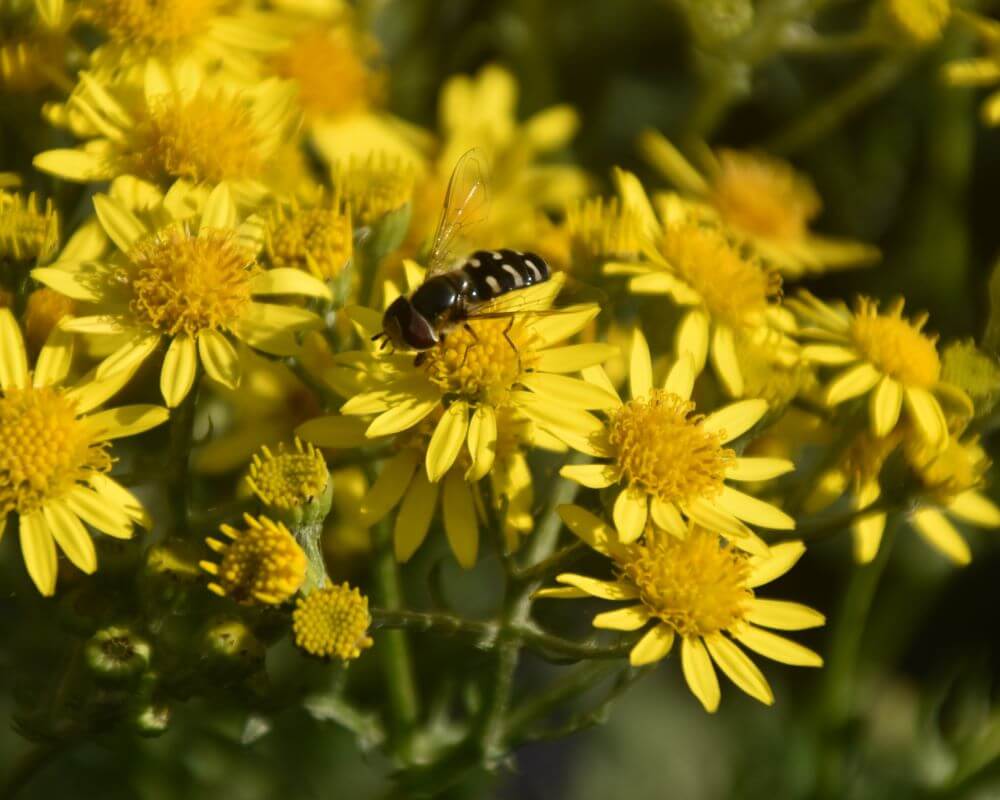
![]() It has very nectar rich flowers. Indeed the ones I’ve allowed to grow in my garden are constantly frequented by pollinators of all kinds. And we all know pollinators do need a bit of help to achieve and maintain healthy populations.
It has very nectar rich flowers. Indeed the ones I’ve allowed to grow in my garden are constantly frequented by pollinators of all kinds. And we all know pollinators do need a bit of help to achieve and maintain healthy populations.
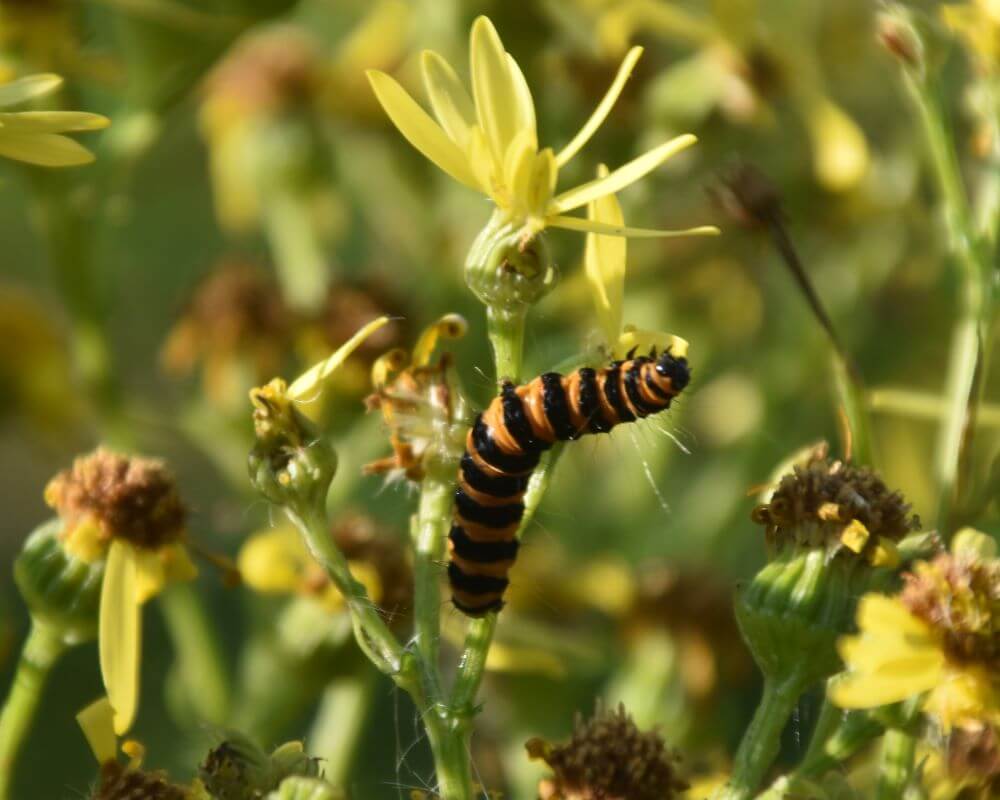
![]() The caterpillars of the cinnabar moth feed on its leaves. They become poisonous to birds by eating these leaves and their cute yellow and black stripes actually warn their predators not to eat them. One of those clever tricks nature plays. As these caterpillars only eat ragworts, the demise of one would mean the demise of the other too.
The caterpillars of the cinnabar moth feed on its leaves. They become poisonous to birds by eating these leaves and their cute yellow and black stripes actually warn their predators not to eat them. One of those clever tricks nature plays. As these caterpillars only eat ragworts, the demise of one would mean the demise of the other too.
So, …
![]() It does spread easily and can grow pretty big, but if you do have some space and can keep it under control, consider having some ragwort grow, to help feed bees, hoverflies, butterflies and catterpillars. It’s really a joy to watch all its visitors.
It does spread easily and can grow pretty big, but if you do have some space and can keep it under control, consider having some ragwort grow, to help feed bees, hoverflies, butterflies and catterpillars. It’s really a joy to watch all its visitors.
